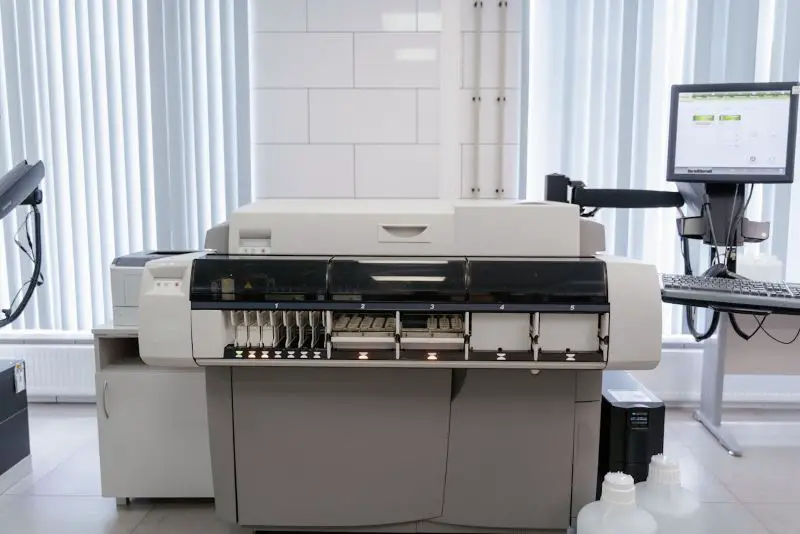Click here to get this post in PDF
Remember the last time a poster, banner, or event display really caught your eye? Was it the bold colours, sharp text, or perhaps the smooth, high-end finish that made you stop and take notice?
That’s the power of large format print quality, and it’s evolving fast.
Whether in retail, exhibitions, or branded environments, visuals are one of your most powerful marketing tools. And when you’re going big with your message, how your print is finished matters just as much as what it says.
Thanks to digital technology, there’s a major shift in how large-scale prints are produced and perfected. From stunning textures to flawless cutting and eco-friendly materials, digital finishing technologies are raising the bar for large format printing in every way.
In this article, we’ll take a closer look at these technologies, how they’re transforming print outcomes, and why they’re a game-changer for businesses that want to be seen and remembered.
What is Large Format Printing?
Before we dive into finishing technologies, let’s take a moment to understand what large format printing actually means. Simply put, it’s the process of printing graphics and designs that are too big for standard printers to handle.
Think posters, banners, event backdrops, wall murals, or even full window wraps. These large-scale prints are commonly used in marketing and branding, especially in places where catching people’s attention quickly is key
There are various materials used for these prints, each suited to different needs. Paper and vinyl are classic choices, but digital printing fabric is gaining ground thanks to its soft texture and elegant appearance, making it a favourite at exhibitions and retail displays. Another notable option is Re-board®, an eco-friendly material that’s both sturdy and 100% recyclable.
Why Finishing Makes a Big Difference
You might think printing is all about what’s on the surface, but what happens after the ink dries is just as crucial. That’s where digital finishing steps in.
Finishing covers the extra touches that give your print its final look and feel.
With digital finishing, these steps are carried out using precision technology. The result? Cleaner edges, smoother textures, and vibrant colours that last longer. It also lets businesses customise their prints in unique ways, think embossed details, cut-outs, or varnishes that really pop.
In short, digital finishing helps transform a good print into a great one.
What Are the Types of Digital Finishing Technologies That Matter?
Here are a few key digital finishing technologies that are improving large format print quality today:
- Digital Embossing: This adds raised textures to your prints without using heavy moulds.
- Laser Cutting: For detailed designs and custom shapes, laser cutting is the go-to. It’s precise and clean, ideal for intricate signage or displays.
- UV Coating: This adds a protective layer to your print and enhances colour depth.
- Die-Cutting and Creasing: These techniques help in creating foldable displays, packaging, and point-of-sale setups. They’re especially useful for visual merchandising where structure and shape matter.
Each of these technologies not only boosts durability and improves appearance but also gives brands more freedom and flexibility in their design choices.
Where You’ll See It in Action
These high-quality finishes are being used across industries to drive results.
Retail spaces use them for in-store signage, window graphics, and pop-up displays.
- Event and exhibition planners rely on large-format prints for booth backdrops, banners, and photo walls.
- Outdoor advertisers use them for building wraps, transit ads, and billboards that need to withstand the weather.
- Interior decorators create stunning wall murals and printed textures for unique atmospheres.
Across the board, digital finishing helps these sectors stand out and deliver impressive, lasting visuals.
Sustainability Meets Innovation
One of the most exciting things about today’s digital finishing technologies is how much more sustainable they’ve become.
Take materials like Re-board®, for example. It’s recyclable, lightweight, and durable, making it perfect for environmentally conscious campaigns. Plus, many digital printers now use waterless printing methods and energy-efficient equipment, which helps cut down on waste and emissions.
And when it comes to reuse, digital printing fabric is a game-changer. It’s easy to store, reprint, and transport, especially for businesses that attend more than one event throughout the year.
How to Get the Best Print Results?
If you’re planning a large-scale print project, keep these tips in mind to ensure top-quality results:
- Use high-resolution images to avoid pixelation.
- Stick to the right colour profiles to keep your brand colours consistent.
- Work with experienced professionals who understand the technical and creative aspects of large-format printing.
- Choose the right materials for your purpose like fabric for elegance, Re-board® for eco-friendliness, and paper for quick, budget-friendly jobs.
The finishing stage is where all your hard work comes together, so don’t cut corners there.
Final Thoughts
Thanks to digital finishing technologies, brands can now achieve large format print quality that not only looks stunning but also lasts longer, performs better, and truly reflects their values – whether that’s innovation, elegance, or sustainability.
From luxurious digital printing fabric at trade shows to bold window graphics in retail, the right finishing touches really do make all the difference.
So, next time you’re planning a campaign, take a moment to think about how it’s finished – and how that finish can help your message stick.
You may also like: Novenda Technologies secures $6.1M to revolutionize dental products with breakthrough 3D printing
Image source: Pexels.com

